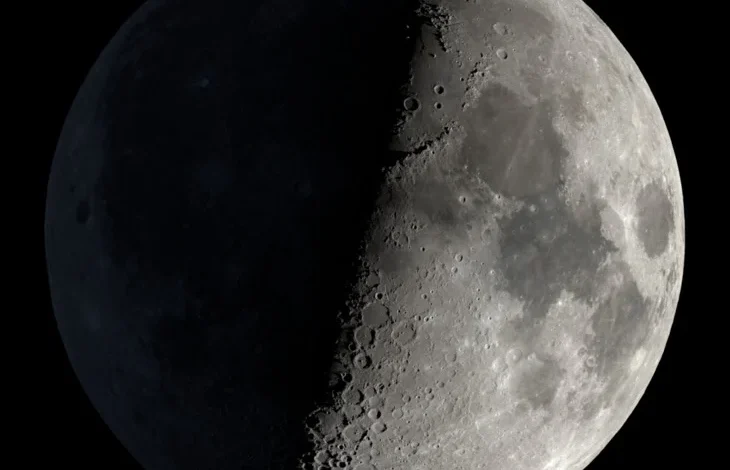The Sky Today on Wednesday, October 29: The First Quarter Moon shines

Back to Article List
A lovely First Quarter Moon shows off rugged craters along the terminator and the remnant of a big hit near the southeastern limb: the crater Stevinus.
At First Quarter, the lunar terminator appears to split the nearside in two. Standing out near the southeastern limb is the bright crater Stevinus. Credit: NASA’s Scientific Visualization Studio
- The First Quarter Moon is scheduled for October 28 at 12:21 P.M. EDT, presenting its terminator halfway across the visible lunar disk.
- During this lunar phase, observers can distinguish maria and numerous large, round craters, particularly along the southern terminator.
- The crater Stevinus is highlighted as a prominent feature, observable near the southeastern limb, characterized by bright ejecta rays and a large central peak.
- October 28 is also identified as an occasion to track the movement of the dwarf planet Ceres.
Looking for a sky event this week? Check out our full Sky This Week column.
October 28: Track Ceres’ movement
First Quarter Moon occurs at 12:21 P.M. EDT. It’s visible in the south in Capricornus at sunset and remains up almost all evening, setting in the half hour before midnight. The most noticeable feature on our satellite is one that is dynamic — the terminator, the dividing line between night and day, which stands halfway across the visible face of the Moon at First Quarter. Visible on the lit half of the Moon are large, dark areas — these are maria, or seas, although they were formed by lava, not water.
Along the terminator to the south, you’ll spot many large, round craters. Take some time to explore the rugged terrain with a telescope. Also notice the large white feature close to the southeastern limb — this is the crater Stevinus, which is surrounded by bright rays of ejecta (material thrown up and out during the impact that created the crater). This crater has a large central peak — a common feature in impact craters — that can be seen quite well with a telescope.
Sunrise: 7:26 A.M.
Sunset: 6:01 P.M.
Moonrise: 2:29 P.M.
Moonset: —
Moon Phase: Waxing gibbous (55%)
*Times for sunrise, sunset, moonrise, and moonset are given in local time from 40° N 90° W. The Moon’s illumination is given at 10 P.M. local time from the same location.





